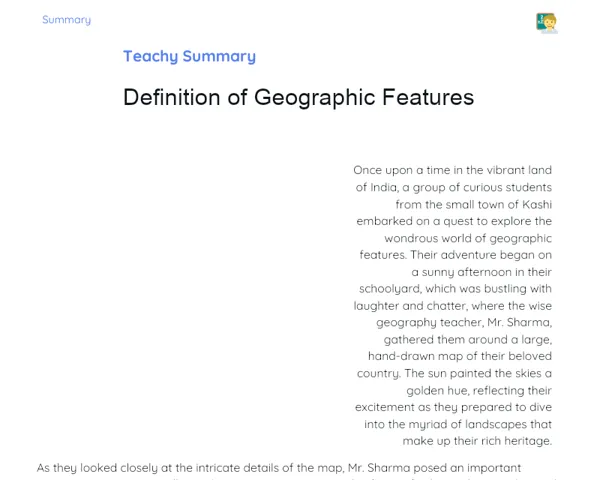Summary Tradisional | Climate: World
Contextualization
Climate plays a vital role in shaping life on Earth. It influences everything from the types of plants and animals that thrive in an area to how communities function and interact. Various regions around the globe exhibit different climate types, determined by factors like latitude, altitude, proximity to the ocean, and ocean currents. Grasping the distinct climate types is crucial for understanding their direct effects on our lives, notably in agriculture and even in our clothing choices.
In this lesson, we will delve into the primary global climate classifications and their features. We will pinpoint and describe the equatorial, tropical, subtropical, polar, and desert climates, linking them to their locations on the world map. This knowledge will enhance our comprehension of how climate impacts biodiversity and human lifestyles across different regions.
To Remember!
Equatorial Climate
The equatorial climate is marked by high temperatures and humidity throughout the year. Areas with this climate are typically found around the Equator, like the Amazon, parts of Central Africa, and regions in Southeast Asia. The stable temperatures and elevated humidity lead to frequent, substantial rainfall, fostering dense and diverse vegetation known as tropical rainforests.
The vegetation in these areas features tall trees, epiphytes, and a rich variety of animal and plant species. This humid and consistent environment is ideal for supporting biodiversity. Equatorial rainforests play a significant role in regulating the global climate and act as crucial carbon sinks.
Additionally, the local populations have adapted their lives to these climatic conditions, often relying on subsistence farming and gathering forest products. However, issues like deforestation and over-exploitation present major challenges for sustaining this precious ecosystem.
-
Location: Around the Equator
-
Characteristics: High temperatures and humidity throughout the year
-
Vegetation: Dense and diverse tropical rainforest
-
Importance: Regulates global climate and supports high biodiversity
Tropical Climate
The tropical climate is characterized by two distinct seasons: a wet season and a dry season. This climate type is prevalent in areas like India, Brazil, parts of Africa, and Australia. Temperatures remain high year-round, but rainfall varies significantly between the seasons.
During the wet season, tropical areas receive abundant rainfall, fostering lush plant life. Conversely, the dry season sees a sharp decline in rainfall, leading to droughts. These seasonal changes have pronounced effects on agriculture and water resource availability.
People living in tropical regions adapt their lifestyles according to these seasonal shifts. Agricultural practices are often timed with rainfall patterns, while effective management of water resources becomes crucial during dry periods. The fauna and flora in these regions also show specific adaptations to navigate climatic changes.
-
Location: Regions like India, Brazil, Africa, and Australia
-
Characteristics: Two distinct seasons (wet and dry)
-
Impact: Influences agriculture and water resource management
-
Adaptations: Fauna, flora, and human lifestyles adapted to seasonal changes
Subtropical Climate
The subtropical climate is observed in areas like southeastern United States, parts of China, and southern Brazil. It typically features hot, humid summers and mild winters. While precipitation is distributed throughout the year, certain regions may experience a wetter season.
Vegetation in subtropical climates is diverse, including temperate forests, savannas, and even pockets of tropical rainforest. The variety of plant and animal species is significant, with many being unique to these regions. Favorable climatic conditions support agriculture, allowing for a variety of crops to be grown year-round.
Inhabitants of subtropical regions benefit from the mild climate and abundant natural resources, leading to economic growth. Agriculture remains an important activity. However, these areas are also at risk from extreme weather events like cyclones and heavy storms.
-
Location: Southeastern U.S., parts of China, and southern Brazil
-
Characteristics: Hot, humid summers and mild winters
-
Vegetation: Temperate forests, savannas, and tropical rainforest patches
-
Impact: Beneficial for agriculture and economic growth
Polar Climate
The polar climate prevails in regions close to the poles, including Antarctica and the Arctic. Temperatures are exceedingly low year-round, with brief, cold summers and prolonged, harsh winters. Precipitation is minimal, typically falling as snow, and the landscape is predominantly ice and tundra.
Life in polar areas has evolved remarkably to withstand these extreme conditions. Flora is limited to mosses, lichens, and a handful of herbaceous plants, while fauna includes polar bears, penguins, and seals, which have special adaptations to thrive in the biting cold. Although biodiversity is lower compared to other climates, the species there are specially adapted to their harsh environment.
Human activity in polar climates is limited. Few indigenous communities inhabit these regions, with scientists often studying the climate and ecosystems. Climate change is having profound effects in these areas, resulting in melting ice caps and habitat loss for many species. Thus, conserving these fragile ecosystems is critical for the planet's health.
-
Location: Near the poles (Antarctica and Arctic)
-
Characteristics: Extremely low temperatures, short and cold summers, long and harsh winters
-
Vegetation: Limited to mosses, lichens, and a few herbaceous plants
-
Fauna: Species well-adapted to severe cold
Desert Climate
Desert climates are found in regions like the Sahara, Atacama Desert, and Arabian Desert. This climate is characterized by extremely low rainfall and significant daily temperature fluctuations. Daytime temperatures can be blistering hot, only to plunge at night.
Vegetation in desert regions is sparse and has adapted to extreme water scarcity. Succulents, like cacti, and drought-resistant shrubs are common. Likewise, animals display adaptations for resilience against harsh conditions, with many being active during the night to escape the daytime heat and possessing techniques to conserve water.
Living in deserts poses numerous challenges, but local communities have devised unique methods to thrive. Water management is paramount, and many rely on oases and underground springs. Developing infrastructure to capture and store water is crucial for survival. Furthermore, cultural practices and technologies have enabled fewer populations to flourish in these tough environments.
-
Location: Regions like the Sahara, Atacama Desert, and Arabian Desert
-
Characteristics: Very low precipitation and significant daily temperature fluctuations
-
Vegetation: Scant and adapted to harsh conditions
-
Human Life: Unique strategies for water management and survival
Key Terms
-
Equatorial Climate: Characterized by constant high temperatures and humidity, with frequent rainfall.
-
Tropical Climate: Defined by two distinct seasons (wet and dry) and consistently high temperatures.
-
Subtropical Climate: Features hot, humid summers and mild winters, with evenly spaced precipitation throughout the year.
-
Polar Climate: Marked by severe cold, abbreviated summers, prolonged winters, and low precipitation mainly as snow.
-
Desert Climate: Exhibits very low rainfall and substantial daily temperature swings, with vegetation specially adapted to water scarcity.
Important Conclusions
In this lesson, we examined the key climate types present around the globe, including equatorial, tropical, subtropical, polar, and desert climates. Each climate bears unique characteristics that directly shape the fauna, flora, and human lives in those areas. We learned how factors such as latitude, altitude, proximity to oceans, and ocean currents define these climatic conditions.
Equatorial and tropical climates highlight high temperatures with fluctuating rainfall, bred from vibrant vegetation. Subtropical climates present a remarkable variety of plant life and support agricultural activities, while polar and desert climates pose extreme challenges of temperature and precipitation requiring special adaptations for survival.
Understanding different climate types is clearly crucial as they have direct ramifications for our lives, spanning from agriculture to our clothing decisions. Moreover, familiarity with these patterns aids in environmental conservation and adapting to shifts brought about by global climate change. We encourage students to delve deeper into this subject to expand their understanding and foster greater environmental consciousness.
Study Tips
-
Refer back to the world map to locate different climates and connect their characteristics with corresponding geographical regions.
-
Investigate the specific fauna and flora of each climate type to enhance your understanding of the adaptations required for survival.
-
Watch documentaries and read articles discussing the impacts of climate change on various climate types for broader insight into environmental preservation.



